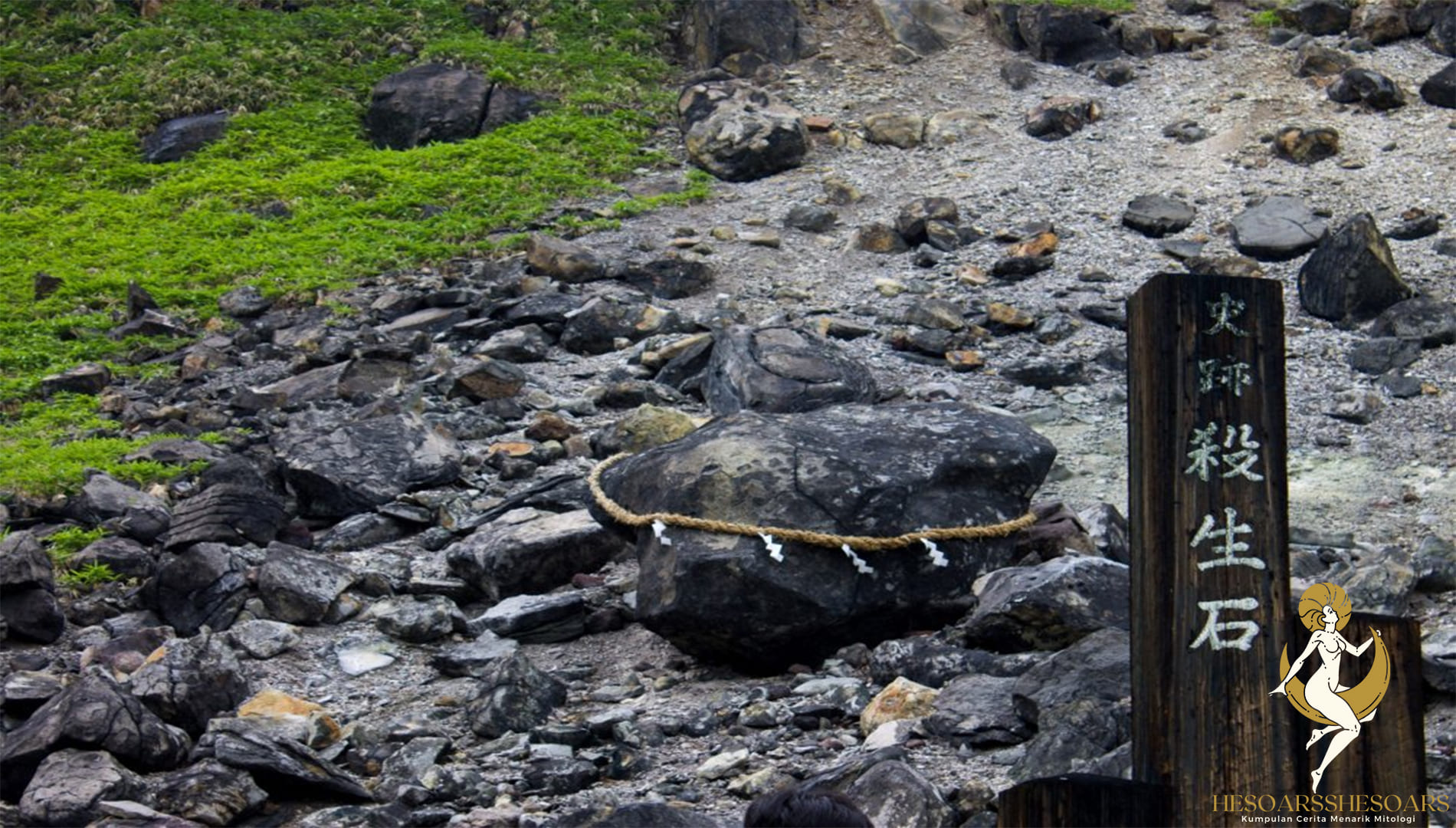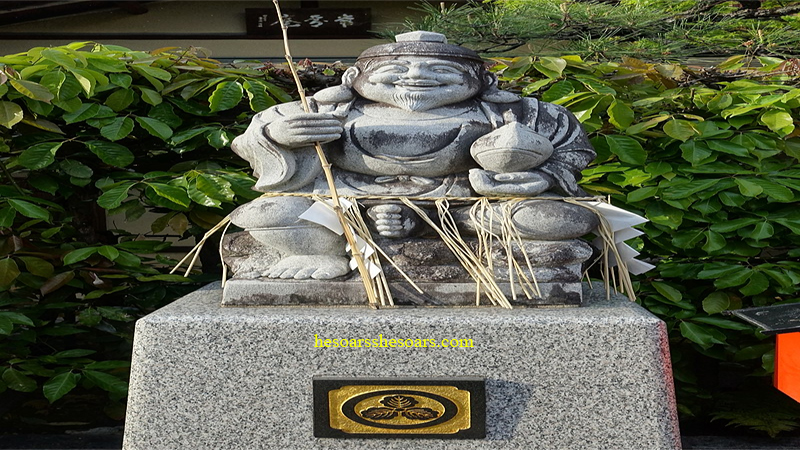Deep in the heart of Japan’s mystical landscapes lies the Sessho-seki or “Killing Stone,” an object wrapped in the rich tapestry of Japanese folklore. Situated in Nasu, Tochigi Prefecture, this legendary stone is not just a geological wonder but a cornerstone of many ancient myths that offers insights into the Japanese perception of nature, spirits, and redemption.
The Legend of Tamamo-no-Mae
At the heart of the Sessho-seki’s story is the tale of Tamamo-no-Mae, a figure deeply ingrained in Japanese mythology. According to the lore, Tamamo-no-Mae was not just any woman but a beautiful, intelligent, and enchanting character, believed to be one of the Three Great Evil Yokai of Japan. She was, in fact, a nine-tailed fox spirit or kitsune, disguised as a woman.
Her story intertwines with historical figures, as she became a favored courtesan of Emperor Toba in the 12th century. However, her true nature was uncovered by the legendary astrologer, Abe no Seimei. Revealing her responsibility for the Emperor’s illness and her intentions of destabilizing the country.
The Transformation and Curse of the Stone
Upon her exposure, Tamamo-no-Mae fled but was eventually killed by the warrior Miura-no-suke. Legend has it that upon her death, her spirit transformed into the Sessho-seki. The stone’s deadly nature is said to emanate from Tamamo-no-Mae’s lingering malice and curse.
Cultural Significance
The Sessho-seki serves as more than just a cautionary tale about the perils of evil spirits. It embodies the complex relationship between beauty, power, and malevolence in Japanese folklore. The story of Tamamo-no-Mae reflects the belief in the supernatural and the thin veil between the earthly realm and the spiritual world in Japanese culture.
Furthermore, the story of the Sessho-seki is a testament to the Japanese aesthetic of mono no aware — the awareness of the impermanence of things and the bittersweet beauty of their passing. The stone, once a symbol of death and revenge, has now become a site of reflection and remembrance.
Modern Interpretations and Tourism
Today, the Sessho-seki continues to fascinate both historians and tourists. Visitors to Nasu can view the stone, now split into several pieces, a physical reminder of the enduring legacy of these ancient myths. The site has also been a subject of various literary and artistic works, contributing to its mystique and appeal.
The Lesson of the Sessho-seki
The story of the Sessho-seki extends beyond its origins in folklore, offering a narrative about transformation and the possibility of redemption. The stone’s eventual shattering in recent years is often seen as the liberation of Tamamo-no-Mae’s spirit, a final release from her binding curse.
In Conclusion
The Sessho-seki of Japanese mythology is not just a testament to the nation’s rich heritage of folklore and storytelling. It stands as a profound symbol of the interplay between beauty, danger, and the eternal hope for redemption. In its story, we find the enduring power of narrative to bridge past and present, real and surreal, serving as a captivating chapter in the vast anthology of Japanese culture and history.




